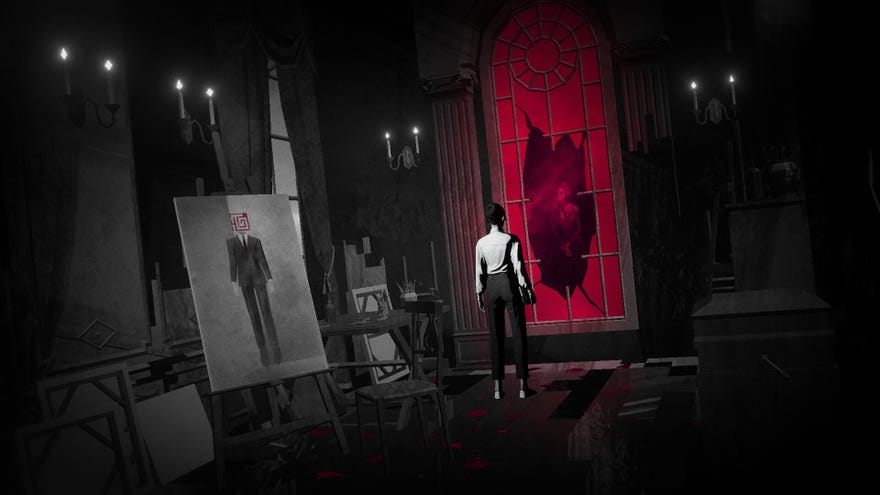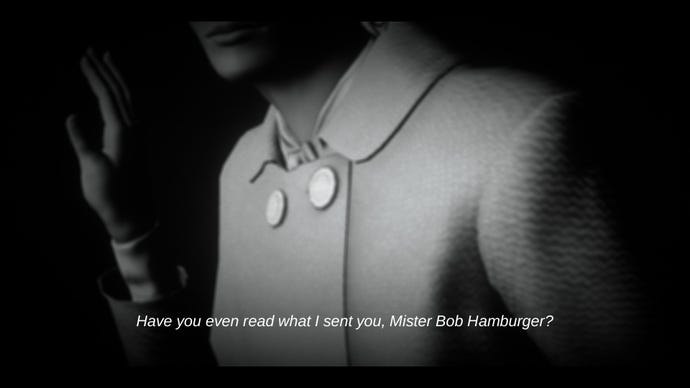HomeFeaturesLorelei And The Laser Eyes
Lorelei And The Laser Eyes doesn’t let its surreal creativity strip its puzzles of logicSimogo on then
Simogo on then
Image credit:Simogo
Image credit:Simogo

It’s 1963. Renzo Nero, the aforementioned artist and director, has called you to his Italian hotel to witness a transcendental cosmic event via his ‘magnum opus’. If you’ve ever gotten drunk with fine art students, you’ll know this usually just means ‘my latest ketamine doodle’, but there’s an immediate splash of the otherworldly about the place. Sometimes that splash is a literal spray of magenta breaking up an otherwise monochrome palette, but it’s also in the stilted surreality of the few conversations you have with the hotel’s inhabitants. Initially, it’s most keenly felt in a place you’d expect to be straightforward: an instruction manual, found in a glovebox.
LORELEI AND THE LASER EYES | Maze TrailerWatch on YouTube
LORELEI AND THE LASER EYES | Maze Trailer

Image credit:Simogo/Rock Paper Shotgun

As I said though, despite that separation, the puzzles are still all grounded within this overarching mystery. What’s key here for me, as someone who loves a clever puzzle in a survival horror game but isn’t fussed about them for their own sake, is that Lorelei’s rewards run deeper than just the satisfaction of overcoming a head-scratcher. This is a place I want to explore and a story I’m desperate to uncover. Encounters with Nero build mystique around a character that becomes more disturbing with each meeting, with each scrap of information I glean about his work making his empty ramblings seem more menacing. And, while Lorelei shares more DNA with mobile puzzler Device 6, Sayonara Wild Hearts’ passion for music eerily earworms its way through scattered phonographs.
I’ve mentioned survival horror a few times now, but please don’t be put off if that’s not your thing! There’s absolutely no combat or inventory management, for one. And, unless there’s a big tonal shift later, I can’t see you having to outrun any dogs, either. There are parallels, though. The fixed camera for one, but mostly the sense of creating a mental map of a sprawling single location. You can find maps, although even the process of accessing them is multi-tiered and thoughtful and a touch fiendish, if only because I was massively overthinking the solution. That’s another thing: there’s no moon logic here. Again, Lorelei saves the surreal for its setting, while its challenges are grounded, sensical, and give a lovely sense of having traced an A to a B once solved.